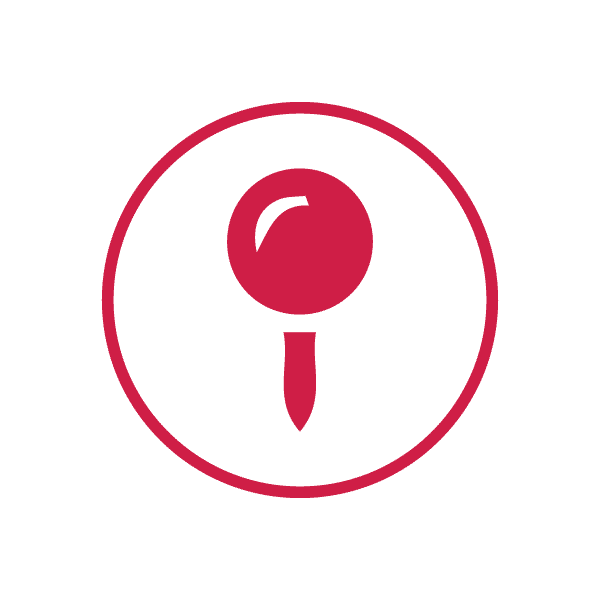The Forex Market or FX market derives its name from Foreign Exchange Market. It is essentially the exchange of currency (money, currencies) between two different countries. The Foreign exchange market is the largest financial market in the world. It is open 24 hours per day, 5 days per week. The Forex market has a daily turnover of around $5 trillion per day. To put this in perspective, the daily turnover of Wall Street is only $22 billion. It is a well-known fact that the FX market dwarfs the combined turnover of all the equity markets combined. This makes it the most liquid market on the planet. Forex market beginners will find this article very useful.
Below is a table of the worlds “major” currencies. We listed them by nickname as they are most commonly known.
In the past, only Banks and Institutions had access to this market but with the advent of the internet and the continual improvement in speeds of the net, the Forex market is accessible to everyone including the small retail investor.
Currencies are traded in a pair. The rates that they are exchanged at are called exchange rates. Around 75% of all trades include the US Dollar (USD), it is followed by the Euro (EUR), Pound (GBP), Swiss Franc (CHF) and the Japanese Yen (JPY).
The price for each currency pair is known as the “quote”. You will see two numbers, a BID and OFFER price – the difference between the BID and OFFER is referred to as the spread. The BID is where the broker will BUY the pair, and the OFFER is where the broker will SELL the pair. The forex marker vs stock market is a whole new article in itself.
Forex Market Currency Pairs
A Currency Pair refers to which currencies are being exchanged, we have seen in the above table the currency symbols for the major currencies. When expressing pairs, we will combine the currency symbols of the 2 exchanged currencies such as USD/CAD is the US Dollar-Canadian Dollar Pair. The market norm is to use the USD quoted first – with the following exceptions
- GBP (Great Britain Pound)
- EUR ( Euro)
- AUD ( Australian Dollar)
- NZD (New Zealand Dollar)
- BWP (Botswana Pula)
Below is a table illustrating the most frequently traded pairs. These pairs are often referred to as the “majors” and are widely regarded as the most liquid pairs in the world.
Forex Market Trading Sessions
As previously discussed, the Forex market is open 24 hours a day, 5 days per week. This allows ample opportunity for traders to make money. It is important to be reminded though that just because the market is open for 24 hours, it doesn’t mean that the forex market hours are active for 24 hours. Knowing what hours the Forex market is most liquid is sometimes key to a successful Forex trading.
Strictly speaking, the market is broken down into 4 major sessions. The opening and closing times of the various sessions are dictated by local business hours. The timing can change with the seasons as some countries practice Day Light Savings, the below table illustrates the current season times (October – April):
You will often hear the media refer to the early session, as the Asian Pacific Session. This is because some traders often combine the Sydney and Tokyo session to create 3 major sessions. The best time is trade when there are the most “market players” trading. Hence, when more than one session overlaps. You can see that there are times during the day where Tokyo and London overlap. It is also evident that London and New York also overlap. It is during those overlapping periods when the bulk of trading is done. Naturally, there will be more volume and liquidity in these times. Understanding how candlestick price charts work can help you better understand how price moves during each session.
On average the London session will see the biggest average pip movement, followed by New York and lastly Tokyo. A short summary of the major forex market sessions can be seen below:
Tokyo Session
- Classified as the forex market open
- Will often consolidate price action on a preceding day if New York had a lot of volatility
- Generally sets the tone for the day
- Very thin liquidity
- Early morning is the best time of the session to trade
- Best pairs to trade are AUD/USD, NZD/USD and USDJPY
London Session
- Traders are coming in just as Asia is going home for the day
- Is the most volatile session
- Highest liquidity
- Best pairs to trade are the EUR/USD, GBP/USD and USDCHF
New York Session
- Traders come in at lunchtime of the London session
- Most liquidity is during the morning of the session
- US Data releases can create market movement (usually 14:30)
- The afternoon session is quite once the London traders go home
- Since the USD is quoted against all currencies – all major pairs are actively traded.
In recent times there has been a lot of research done on what is the best day of the week to trade, unsurprisingly the middle of the week, Tuesday – Thursday are generally the most liquid and lucrative days to trade. Friday morning is also a good day to trade but liquidity is reduced very quickly by the time New York comes into the market.
Below is the research of average daily pips traded on any given day – this research is covered by many different institutions*
*Accurate as at 22 November 2016.
The Quote
In any quote, you are effectively executing two transactions. An example of this would be a trade in USD/CAD – you are buying one currency whilst simultaneously selling the other. Let us look at an example below by using the USD/CAD
USD/CAD – 1.3575
The currency on the left (in this example USD) is known as the base currency, whilst the currency on the right (in this example CAD) is referred to as the quote currency. This is telling us how much of the quote currency to you have to pay to receive 1 unit of the base currency. In the above example, you would have to pay 1.3575 Canadian Dollars to receive 1 United States Dollar. Conversely, you will receive 1.3575 Canadian Dollars when you sell 1 United States Dollar.
The Base currency is always the basis of the quote. In the above example – if you think the USD (base currency) is going to appreciate you would “buy”, and if you think it is going to depreciate you would “sell.” Another way of referring to your direction of trade would be “going long” or “going short” where long = buy and short = sell. You will often hear traders refer to long or short a position
We refer to the denomination of the quotes price in pips. In the major currency pairs, a pip is the fourth decimal place of the quotation. In our example above 1.3575, the “5” is one pip. That brings us to the difference in quoted price – referred to as the spread.
You will always see an FX pair quoted with 2 prices. These are referred to as the bid and offer. Strictly speaking, the bid should always be lower than the offer. The bid is the price that the broker will buy the base currency, which means that it is the price that the trader will sell the base currency. The offer is the price where the broker is willing to sell the base currency in exchange for the quote currency. We show an example below.
USD/CAD 1.3575 – 1.3578
- The Broker is BUYING USD and SELLING CAD at 1.3575, the Trader is SELLING USD and BUYING CAD at 1.3575
- The Broker is BUYING CAD and SELLING USD at 1.3578, the Trader is SELLING CAD and BUYING USD at 1.3578
To calculate the spread, the trader would calculate the difference between the 4 decimals of the quote
1.3575 – 1.3578 = the spread is thus 3 pips.
Placing the Trade
Now that we know what the basics of the quote, we need to go through the mechanics of placing the trade – after all, we all are in this to make a positive return. We have decided that we like the lookup of a trade and we want to “go long” or BUY the pair in our example above.
- SELL CAD and BUY USD at 1.3578
Firstly we will need to decide how much of our account we are comfortable risking. Spread trading is known as a leveraged product and therefore we trade on margin. This essentially means that the trader is able to trade with borrowed capital – some traders see margin as the minimum amount of money in your account and interpret this as your protection. To calculate the margin factor of Blackstone Futures instruments (FX only) we usually require around 1% of the exposure you wish to take.
In our example of “going long” USD/CAD at 1.3578, we can see from our instrument sheet that our margin factor is 75. This means that you will have to place 75*(stake) as margin. Some interpret this as a form of “deposit” on your leveraged trade.
If the trader decides that he/she is comfortable placing a trade of R 10 per pip then the margin would be
R 10 * 75 = R 750
NB: Trading using margin comes with greater risk. Leverage will magnify both your profits and your losses.
Calculating Profit
Now that we have placed the trade we can monitor our performance throughout the duration of the trade – hopefully our reasons to trade were correct and we are able to make a positive return. We calculate our profits by calculating the “spread” of our open trade and multiplying by our stake.
In our example above the trader would calculate profit as such:
- Open Trade: BUY R 10 USD/CAD @ 1.3578
- Sell Trade: SELL R 10 USD/CAD @ 1.3628
- Spread: 3600 – 1.3578 = 50 pips
- Profit: R 10 * 50 pips = R 500
By increasing our risk to R 50 per pip and thus our margin to R 3,750 (R 50 * 750)
- Open Trade: BUY R 50 USD/CAD @ 1.3578
- Sell Trade: SELL R 50 USD/CAD @ 1.3628
- Spread: 3600 – 1.3578 = 50 pips
- Profit: R 50 * 50 pips = R 2,500
It is simple to see how increasing our risk, in conclusion, increases profit. It can also increase our losses. Read our Take profit targets – What you need to know article to assist you with risk-reward ratios and profitable trading.
Holding a Trade Overnight
Traders are able to keep an open position overnight, this is referred to as a “Swap” or “Rollover”. Just as every country has its own currency – so they also have their own interest rate. The trader will either receive or pay a small holding fee to keep the position active overnight, called the “swap” or “rollover”, calculated using the difference between the two different interest rates.
If the interest rate on the currency you bought is higher than the interest rate on the currency you sold, then you will have a small fee paid to you (positive roll). If the interest rate on the currency you bought is lower than the interest rate on the currency you sold, you will then have to pay a small fee (negative roll).
Both CloudTrade and MT4 offered by Blackstone Futures calculates this for you.
Stop Loss and Margin Call
Unfortunately, very few traders have success on every trade. The trader will need a sufficient margin to hold a trade. Traders implementing this can see it as a form of protection again adverse price movement.
Traders are encouraged to either place a stop loss or have a level in mind at which the trade will be closed. A stop loss is a level where the trading platform will automatically close an open position, a stop loss is a tool that was designed to limit a trader’s loss and if used effectively it can help to remove the emotion out of trading the Forex Marker.
If a losing position is not closed, the trader will receive a margin call. A margin call is made when the trading account no longer has enough funds, hence the account cannot support the open position. The margin call is in place to protect both the trader and the broker from further negative price moves.
If you receive a margin call you can do one of four things
- Do nothing. If you get to a point where there is no more money, the platform will automatically close the position.
- Close the position
- Close only a portion of the position
- Deposit additional funds into the account
Trading The Forex Market with Blackstone Futures
100% Client focused we strive to be a leading online financial market provider. Offering 750 products at industry leading spreads and strive to make our clients' investments work for them. Having our clients best interests at heart – we do NOT take the other side of your trade. Meaning that we have NO conflict of interest. We have your back! Learn more about What Confident Traders Don't do and improve your trading psychology. We trust this article could explain a foreign exchange market in more detail. Forex trading is a growing market in South Africa and immensely popular globally. These forex market basics will assist you with your trading journey.
To help you trade with confidence, we offer Free:
- Trading Webinars
- Seminars
- Educational Video’s
- Daily Market Previews
- Technical Analysis
Read More Educational Articles
High Risk Investment Warning: Trading foreign exchange and/or contracts for difference on margin carries a high level of risk, and may not be suitable for all investors. The possibility exists that you could sustain a loss in excess of your deposited funds and therefore you should not speculate with capital that you cannot afford to lose. Before deciding to trade the products offered by BlackStone Futures you should carefully consider your objectives, financial situation, needs and level of experience. Trading on margin involves risk you should be aware of. BlackStone Futures provides general advice that does not take into account your objectives, financial situation or needs. The content of this Website must not be construed as personal advice. BlackStone Futures recommends you seek advice from a separate financial advisor. Please take the time to read our Risk Disclosure Notice.
[su_divider]














